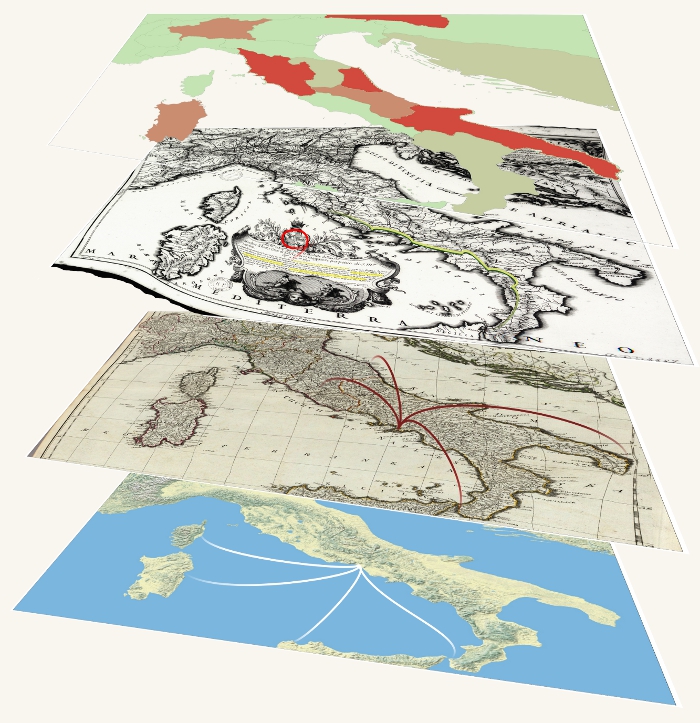On September 28th, from noon to 5PM, I’ll be taking part in the SULAIR Open House, where I’ll show off a few tools and analyses I put together for the “Mapping the Republic of Letters” project in an attempt to explain what I do as a digital humanities specialist, and, in the process, explain what the digital humanities is and could be. I’m not the only one wrestling with this, and some notable examples are HASTAC Scholar Chris Forster’s explanation of the four circles of the digital humanities circus and Patrik Svensson’s “The Landscape of the Digital Humanities” up at DHQ.
Like any such presentation, my own will be an exaggerated and oversimplified vision of my work and, through it, the digital humanities as a whole, but in a sense that’s the best one could do to explain such an admittedly nebulous concept. “Digital Humanities” isn’t a field, rather it’s a transition through definition of two pernicious Others: the “traditional humanities” (which no one has ever claimed to exist before the digital arrived) and “Humanities Computing” which has been long-established and as such could not afford the inclusion of games studies and database analysis and geographic information systems into its hard-wired text-focused analytical realm, much less digital pedagogy, social media studies or the many other digital humanities topics that will be found at DH2011′s Big Tent.
The Digital Humanities quickly became tied to a populist concept of new media, where anything and everything involving books and computers could be considered the Digital Humanities, which has itself led to redefinition through a new pernicious Other, which leads to the Spatial Humanities, Digital Geographers, Spatial Historians, Interdisciplinary Humanists, and Multimodal Humanists who define themselves as not being (nor seeing the usefulness) in the “Digital Humanities”. I’m just as guilty of planting flowers of revolution, claiming the existence of a Procedural Humanities in examination of humanities knowledge represented in games, as well as distinguishing algorithmic media from new media in the former’s focus on the logical constructs that produce the effects typically associated with the latter.
While a fertile ground for self-definition, this shifting and swaying of the very bedrock of an academic pursuit is still a barrier to participation. In my own experience discussing the development of digital scholarly media with interested faculty, I’ve come upon an all too common complaint about the superficiality of digital humanities research and scholarship. Partly, I believe, this is a result of so many different disciplines represented under the auspices of the digital humanities. Sometimes, the result of a classicist being exposed to a new media theorist or a historian confronted with the study of literature is a retreat into stereotypical derision for different field, with different methods. More often, unfortunately, is the legitimate criticism of digital humanities projects that is still so lacking within the digital humanities community itself.
But the integration of digital media into the humanities has traction and a growing appeal. Digital humanities labs are producing more and more undergraduates and graduate students who feel it natural to use once arcane software packages. Libraries and departments are providing more outreach to identify and support interested faculty who may not think of themselves as being part of the digital humanities. So, while the digital humanities remains nebulous and seems destined to shatter into a thousand new, possibly equally nebulous, concepts, it seems to be serving its purpose.

